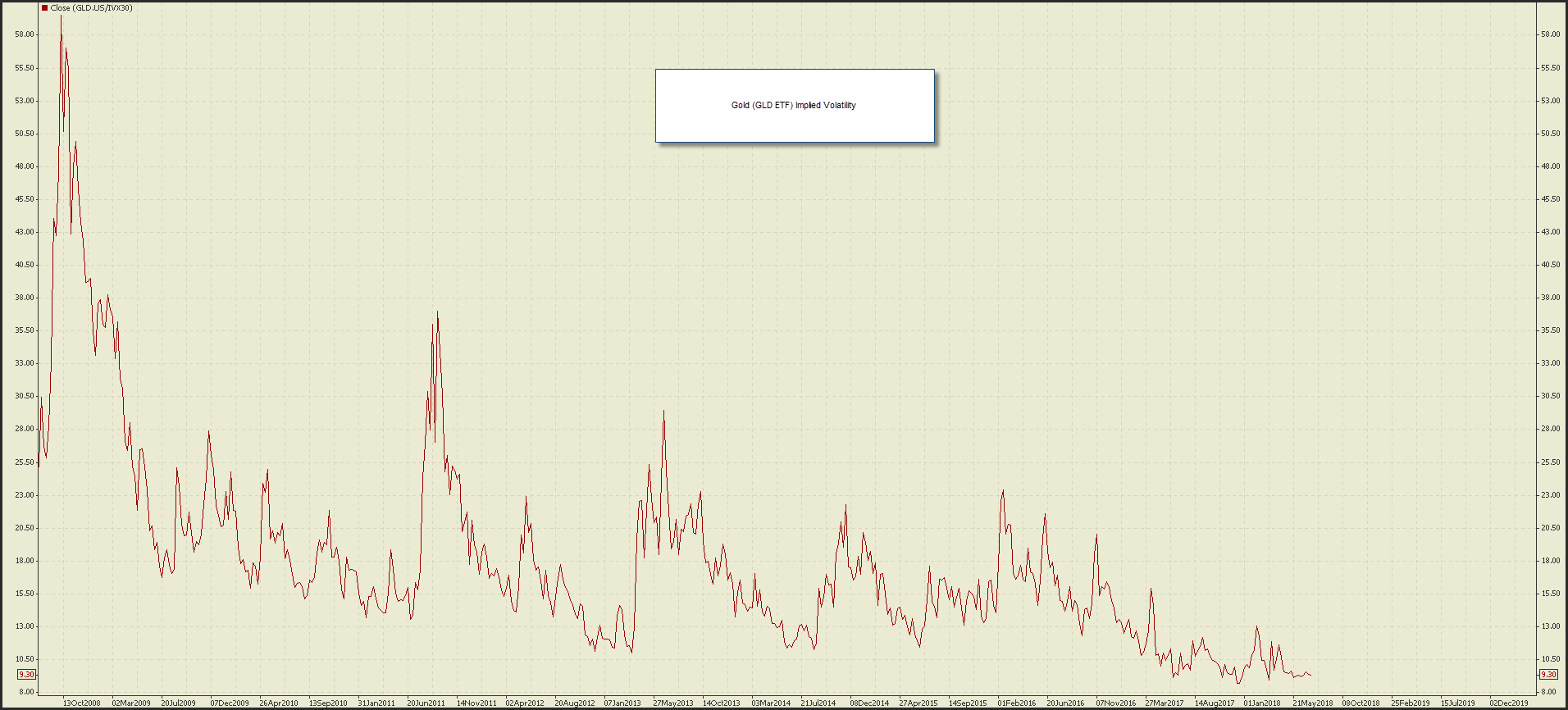
- Gold Volatility Approaches 10-year Lows
- Investors are Complacent Despite a Potential Trade War
- The Impending November Elections Should Buoy Gold Demand
Investor complacency is hitting record low levels which likely foreshadows a shock to the capital markets system. The issue stems from the divergence in economic growth between the U.S. and other developed countries. As the U.S. enters the final stages of this economic cycle, conflicting issues are generating headwinds and tail winds for the markets. With a trade war on the horizon and the impending mid-term elections, it’s surprising that market forces are keeping gold prices subdued, which has allowed volatility to reach historical lows.

Tracking Inventor Sentiment
Investor sentiment is very important to track. You want to make sure you are not buying when everyone is elated and not selling when market participants are depressed. Sentiment usually defines prices, which means you need to track extremes in sentiment. When complacency is prevalent, you need to be leery and when fear is overwhelming you need to avoid acting on your emotions. One way to measure sentiment is to evaluate market volatility. When volatility is high, investors are scared and markets whipsaw. When volatility is low, complacency sets in, setting investors up for whipsaw price action.
Gold Volatility
Gold volatility tracks the perceived changes in the price of gold. Surprisingly, despite several impetus that could rock the capital markets, gold volatility is near historical lows. The chart of historical gold volatility tracked by the SPDS Gold Shares ETF, is near 10-year lows near 9.3%. This means that traders believe that gold prices will only move by 9.3% either higher or lower over the next 12-months. This compares to the 5-year average of volatility of 17%, nearly double current levels.
What Does Low Volatility Tell You?
Low levels of gold volatility tell you that market participants do not believe that prices will move much during the next 12-months. This also means that traders are heavily discounting issues that might occur. Global macro issues such as trade tariffs and geopolitical unrest are on the back burner. Additionally, there will be mid-term elections in the United States in November, and what is not priced into the market is a complete divergence in voting sentiment.
In 2016, the U.S. voted for change, sweeping in a Republican President along with control of the House and the Senate. While the market are likely prepared for a small victory by Democrats in the House, there are few that believe that the Senate will turn over, and control of both houses placed in Democrats hands. In this situation the President might lose power, which could send investors rushing into gold. Eventually income taxes could be increased as regulation is brought back. While riskier asset such as stock will feel the brunt of this outcome, gold prices should remain stable and volatility should rise.
Conclusion
Gold prices have experienced a long period of subdued price changes. The market has moved sideways as investors sentiment moved toward complacency. Gold volatility has dropped to multi-year lows. This comes despite several market shocks including the U.S. mid-term elections and a full blown trade war. While neither is completely priced into the market, the bifurcated U.S. electorate could pull a surprise similar to the surprise many experienced following the 2016 elections.
Good Investing,
Treasure Coast Bullion Group
Read more by Treasure Coast Bullion Group, Inc - Staff Writer







